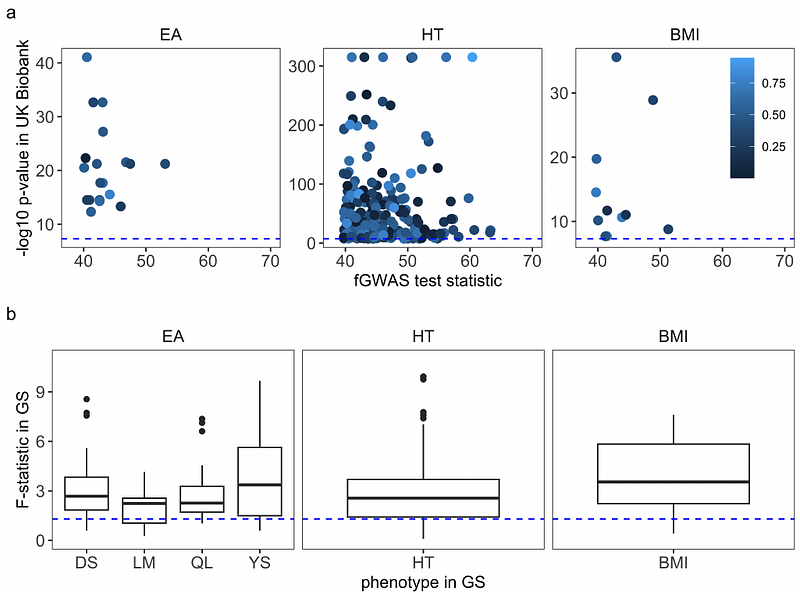Separating direct, indirect and parent-of-origin genetic effects in the human population

Separating direct, indirect and parent-of-origin genetic effects in the human population
Kraetschmer, I.; Hegemann, L. E.; Hofmeister, R.; Corfield, E. C.; Mahmoud, S. M.; Delaneau, O.; Andreassen, O. A.; Campbell, A.; Hayward, C.; Estonian Biobank Research Team, ; Marioni, R. E.; Ystrom, E.; Havdahl, A.; Robinson, M. R.
AbstractHere, we present a novel approach to estimate the degree to which the phenotypic effect of a DNA locus is attributable to four components: alleles in the child (direct genetic effects), alleles in the mother and the father (indirect genetic effects), or is dependent upon the parent from which it is inherited (parent-of-origin, PofO effects). Applying our model, JODIE, to 30,000 child-mother-father trios with phased DNA information from the Estonian Biobank (EstBB) and the Norwegian Mother, Father, Child Cohort (MoBa), we jointly estimate the phenotypic variance attributable to these four effects unbiased of assortative mating (AM) for height, body mass index (BMI) and childhood educational test score (EA). For all three traits, direct effects make the largest contribution to the genetic effect variance. But we find that parental indirect genetic effects make an equivalent combined contribution, and that there is a non-zero PofO effect variance for all traits. We calculate the heritability that would be obtained at the population-level in the absence of AM for common DNA loci, and show that the proportional contribution of direct effects to these heritability values can be calculated as 64.0% for EA in MoBa, 77.1% and 63.4% for height in MoBa and EstBB, and 81.2% and 88.0% for BMI in MoBa and EstBB. Additionally, using within-family genome-wide association testing, we identify 276 independently associated DNA regions that replicate across two additional biobanks, which all show a genotype-phenotype relationship that reflects an interplay of direct, indirect and PofO effects. Determining how direct, parental and PofO genetic effects combine across loci genome-wide to influence human phenotypic variation requires joint modeling of parental and child genotypes alongside the parental origin of loci. We make the first attempt to do this in the human population.